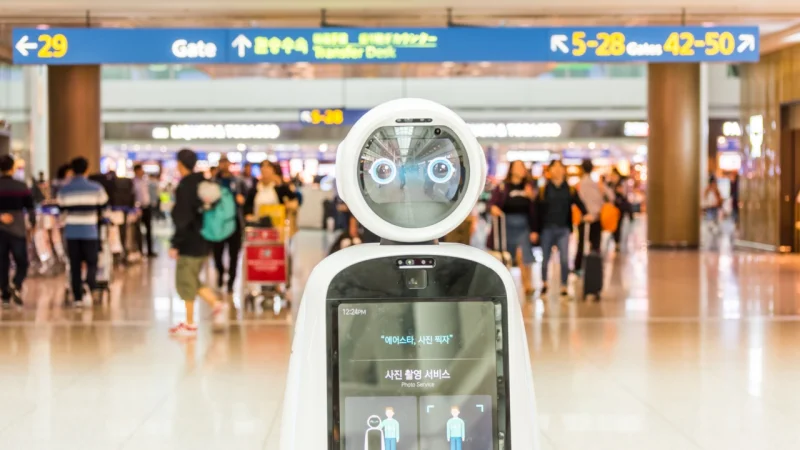How Data and AI Are Improving Airport Transfers to Boston Logan Airport

Getting to or from Boston Logan International Airport (BOS) has historically been unpredictable, smooth on Tuesday, gridlocked on Thursday. This uncertainty is diminishing. With smarter flight forecasts, sharper traffic predictions, and clearer pickup procedures, the entire journey is becoming more reliable and easier to plan. This precision is vital in Boston right now: Logan served approximately 43.5 million passengers in 2024, a record year, and the metro area ranked among America’s most congested, costing drivers roughly 79 hours lost to traffic annually. In a city this busy, every well-timed minute is critical for both families and business travelers.
Managing Boston Logan’s Rapid Passenger Growth
More passengers translate to busier garages and a lower tolerance for guesswork. Massport has been actively reorganizing flows and expanding capacity. The ongoing Terminal B Roadway and Garage Optimization Project is specifically redesigning vehicle movement to create a dedicated, accessible pickup area, consistent with the goal of relieving curbside pressure. Paired with Boston’s persistent delay burden, this underscores a simple truth: precision is the premium. Operations guided by reliable data, rather than hope, ensure planned and professional pickups.
AI Enhanced Flight Tracking for On-Time Arrivals
The older method, circling terminal roads, constantly refreshing flight apps, and exchanging hurried calls, wasted fuel and frayed nerves. Modern aviation data platforms now provide arrival time forecasts that are earlier and significantly more accurate by modeling crucial details like taxi durations, runway assignments, and gate flows. Companies like FlightAware, using deep-learning models, have reported ETA accuracy gains of 30–50 % over legacy methods. For a chauffeur or dispatcher, this accuracy means smarter vehicle call-times, fewer unnecessary trips to the cell-phone lot, and an arrival that coincides perfectly with the traveler reaching the door. Travelers experience minimal waiting, fewer urgent “where are you?” texts, and a calmer, more predictable handoff.
AI Traffic Systems Shorten Boston Airport Routes
On the ground, advanced mapping systems stabilize ETA accuracy by fusing real-time conditions with historical patterns, often utilizing models such as graph neural networks. Google has publicly documented improvements of up to 50 % in ETA accuracy in some cities after adopting these AI techniques. This kind of improvement enables better real-time decisions, choosing I-90 over surface streets at the optimal moment, or committing to an early detour when an incident is detected.
Boston is also a partner in Project Green Light, a Google initiative that uses aggregated travel trends to recommend traffic signal timing updates. In pilot locations within the city, results have shown significant gains, including reductions in unnecessary stops of up to 30 % (and over 50% at specific intersections), alongside up to 10 % lower emissions at treated intersections. Small wins at traffic lights quickly accumulate when a pre-flight window is tight. With these systems in place, Patriots Limousine adjusts routes dynamically, choosing corridors with optimized signal timing to keep airport transfers efficient even during peak Boston traffic.
No single source is perfect, so smart operators layer their intelligence. Mass511 provides official incident reports, road closures, and corridor travel times. Combining this official data with AI-based ETAs gives dispatchers the confidence to pivot before a crash on the Pike turns a smooth plan into a scramble. For premium Logan Airport transportation service including executive sedans, SUVs, and limousines — this data fusion yields a quieter commute and an arrival that truly feels intentional.
What’s Changed in BOS Pickup Choreography
Logan’s pickup rules have evolved to drastically reduce terminal traffic. Most ride-hail trips are now legally geofenced to dedicated areas within the Central Parking Garage (serving Terminals A, C, and E) and the Terminal B Garage, guided by clear signage and in-app directions. Accessibility needs are supported with designated curb options. These platforms use virtual first-in, first-out (FIFO) queues to stage vehicles until a match is made, which cuts down on vehicle idling and confusion.
This redesign is especially helpful for pre-booked private transportation. With the bulk of on-demand trips redirected to the garages, premium services can execute cleaner handoffs: flight-aware timing, precise instructions, and a consistent meeting point. A clear confirmation note specifying “Level X, Door Y” keeps everyone synchronized and eliminates those aimless minutes that make a trip feel chaotic.
Modern Dispatch Techs Improve Ride Accuracy

Some services have demonstrated how machine learning tightens reliability. DeepETA and research into reliability and matching combine routing engines with neural models to provide low-latency, city-aware predictions. The practical outcomes are clear: shorter passenger waits, better vehicle pre-assignments, and fewer misfires.
Boutique fleets can adopt this same logic. They forecast demand across time and place, considering weather, event calendars, and flight arrival banks, then pre-position vehicles where they are most likely needed: near BOS, the Seaport, Back Bay, downtown hotels, and key highway entry points like I-90 and I-93. When a large wave of international arrivals is anticipated, standby vehicles should not be idling miles away.
Effective matching also matters. Optimization under uncertainty ensures that the right vehicle, taking into account capacity, proximity, and upcoming commitments, accepts the job. For luxury operators, this blend of an hour-of-service view, predictive flight data, and robust ETAs is what maintains an executive itinerary without drama.
Backup Transit Options Keep Boston Moving
Even with the best predictions, Boston can still present major challenges. Having fallback options is essential to preserving the premium experience. The MBTA Silver Line SL1 is free inbound from Logan to South Station, making it an excellent resource for staff repositioning or for guests who need resilience when a severe crash stalls I-90 or I-93. Logan Express has also grown significantly, and combined, transit options (MBTA, Logan Express, and private buses) account for a substantial portion of passenger ground access. For premium travel, these aren’t compromises; they’re integral to a resilient plan.
A concierge-style approach might propose a hybrid option: recommending the SL1 into South Station during a severe incident, with a black car waiting curbside there to complete the journey. The connection remains polished, and the schedule stays intact.
Proven Strategies to Improve BOS Transfers

- Feed Flight Predictions Directly into Dispatch: Use predictive arrival and taxi-time signals to adjust pre-assignments before the aircraft blocks in. Integrate gate-change alerts so rider directions update automatically.
- Treat ETAs as Living Numbers: Adopt mapping platforms that leverage advanced models (those responsible for up to 50% ETA gains) and refresh them continuously with Mass511 incident data. Your plan should adjust instantly when the data moves.
- Write the Pickup Path with Precision: If the meeting point is a garage, clearly specify the level, door number, and a landmark. Embed a small map in emails and remind riders at wheels-down. Clarity transforms terminal chaos into a simple rendezvous.
- Forecast Demand and Stage Like a Marketplace: Build reusable templates like “morning domestic bank” or “evening international arrivals.” Stage luxury vehicles based on predicted need, not just habit.
- Offer Multimodal as an Amenity: Proactively suggest the SL1 (free inbound) or Logan Express as a resilient option when a major highway incident is reported. Framing backup options as part of the service protects itineraries and builds trust.
Why Premium Ground Travel Gains the Most
Luxury service is about certainty. When predictive systems guide routing, curb, and vehicle assignment, the ride feels unhurried and expertly managed. This matters most in Boston’s current reality: record passenger activity at Logan and persistent traffic on key corridors.
A chauffeur who appears just as baggage arrives, exits the airport via the path of least friction, and glides through better-timed signals isn’t relying on luck; that’s the result of expert data-driven planning.
For travelers who value time, comfort, and privacy, private transportation remains the most refined way to move between home, hotel, office, and BOS. The polish now comes from data working quietly in the background: flight models that anticipate delays, maps that learn from millions of trips, airport rules that organize the curb, and dispatch systems that think several moves ahead.
Ti potrebbe interessare:
Segui guruhitech su:
- Google News: bit.ly/gurugooglenews
- Telegram: t.me/guruhitech
- X (Twitter): x.com/guruhitech1
- Bluesky: bsky.app/profile/guruhitech.bsky.social
- GETTR: gettr.com/user/guruhitech
- Rumble: rumble.com/user/guruhitech
- VKontakte: vk.com/guruhitech
- MeWe: mewe.com/i/guruhitech
- Skype: live:.cid.d4cf3836b772da8a
- WhatsApp: bit.ly/whatsappguruhitech
Esprimi il tuo parere!
Ti è stato utile questo articolo? Lascia un commento nell’apposita sezione che trovi più in basso e se ti va, iscriviti alla newsletter.
Per qualsiasi domanda, informazione o assistenza nel mondo della tecnologia, puoi inviare una email all’indirizzo [email protected].
Scopri di più da GuruHiTech
Abbonati per ricevere gli ultimi articoli inviati alla tua e-mail.
